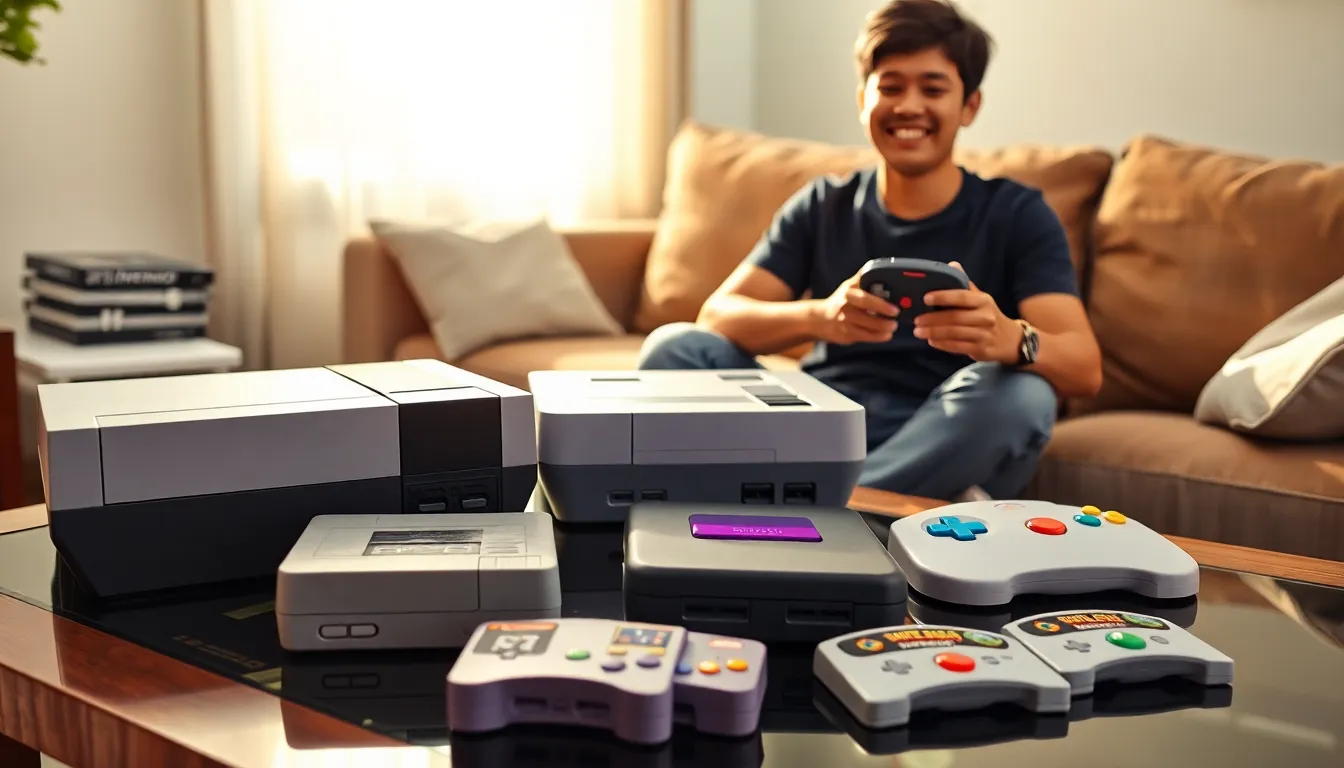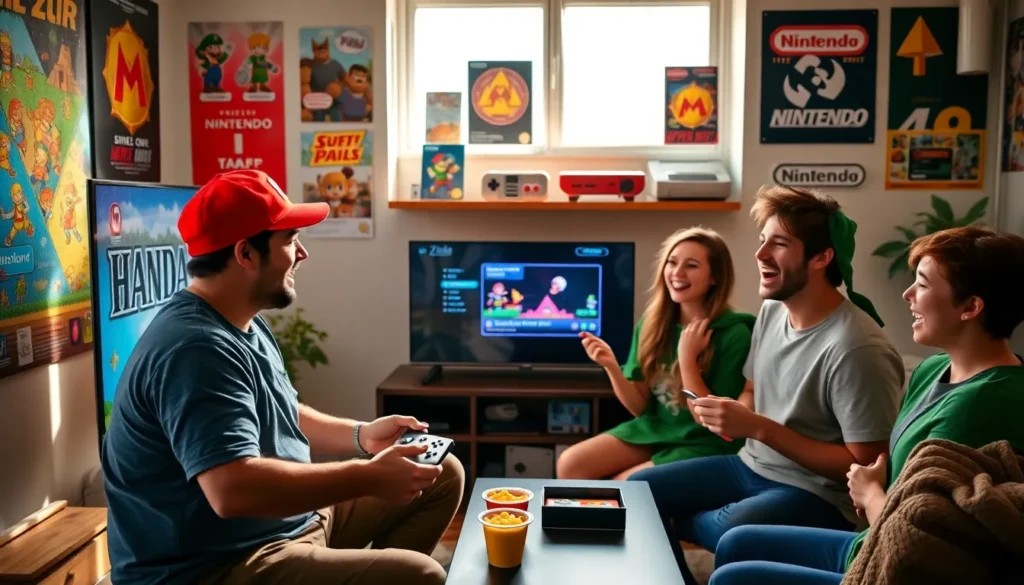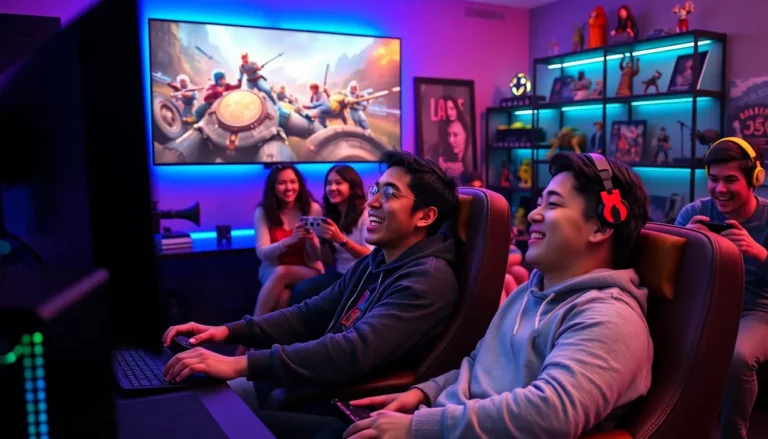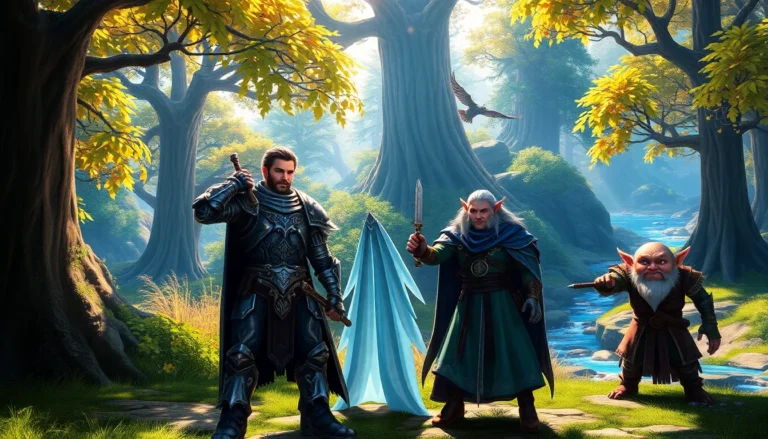Nintendo has long been a titan in the gaming industry, captivating players with its innovative consoles, beloved characters, and engaging gameplay. From its humble beginnings to its status as a household name, the journey of Nintendo is a story of creativity and adaptability. This article dives into the evolution of Nintendo, its iconic franchises, gameplay mechanics, artistic influences, storytelling methods, and the vibrant community that surrounds it, exploring what makes this gaming giant continue to capture hearts around the globe.
Table of Contents
ToggleThe Evolution of Nintendo: A Brief History

Nintendo’s story begins in 1889 as a playing card company in Kyoto, Japan. But, it was not until the late 20th century that it truly began to shape the future of interactive entertainment.
Iconic Consoles and Their Impact
The launch of the Nintendo Entertainment System (NES) in 1985 revolutionized home gaming. With its robust library of games, the NES set new standards for gameplay and storytelling. The Super Nintendo Entertainment System (SNES) followed suit, bringing with it iconic titles that are still cherished today.
Nintendo made further waves with the Nintendo 64, introducing 3D gaming to the mainstream. Titles like “Super Mario 64” showed gamers what was possible in a three-dimensional space, laying the groundwork for future titles.
The Wii marked yet another shift, focusing on motion control and accessibility, making gaming more appealing to a broader audience. This innovation was a game-changer, attracting casual gamers and families alike.
Key Games That Defined Generations
Throughout its history, Nintendo has released many title classics that have become cultural phenomena. “The Legend of Zelda: Ocarina of Time” revolutionized action-adventure games, while franchise staples like “Metroid” and “Donkey Kong” introduced complex gameplay and iconic characters that resonate to this day.
The Rise of Nintendo’s Franchises
Nintendo’s franchises have become synonymous with gaming culture, often shaping individual gaming experiences and entire generations of players.
Mario: More Than Just a Plumber
At the forefront of Nintendo’s glory is Mario, a character who has transcended gaming to become a cultural icon. His adventures, starting with “Super Mario Bros.”, have set benchmarks for platformers, defining gameplay and level design. Mario’s versatility, ranging from kart racing to sports games, showcases Nintendo’s ability to innovate while staying true to core mechanics.
Zelda: Adventures in Hyrule
Another powerhouse franchise is “The Legend of Zelda”. With its rich storylines and expansive worlds, Zelda revolutionized how narratives are woven into games. Each title invites players into an entire universe filled with puzzles, character development, and lore, encouraging exploration and creativity.
The Evolution of Gameplay Mechanics
As technology advanced, so did Nintendo’s approach to gameplay mechanics.
Innovations in Gameplay
The introduction of dual screens with the Nintendo DS and the immersive experience of the Nintendo Switch emphasize Nintendo’s commitment to keeping gameplay fresh and engaging. The Switch’s hybrid model allows for both handheld and traditional console play, catering to diverse gaming styles and making gaming more accessible to all. Features like motion control on the Wii further exemplified Nintendo’s knack for creating immersive experiences that resonate with players.
The Influence of Nintendo’s Art Style
Nintendo’s unique art style has played a significant role in setting its games apart from competitors.
Visuals That Captivate: A Unique Aesthetic
From the vibrant worlds of “The Legend of Zelda” to the whimsical designs of “Animal Crossing”, Nintendo’s approach to visuals emphasizes creativity and charm over hyper-realism. This aesthetic not only appeals to a broad audience but also enhances the gaming experience, encouraging players to immerse themselves in fantastical environments.
Nintendo’s Approach to Storytelling
Nintendo has a distinct method of storytelling that sets it apart from other gamers.
Narrative Depth in Nintendo Titles
Many Nintendo games use minimalistic storytelling techniques, allowing players to fill in the gaps and create personal narratives. Titles like “EarthBound” and the “Fire Emblem” series exemplify how character-driven narratives can create deep emotional connections, resulting in a memorable gameplay experience.
Community Engagement: Nintendo and Its Fans
The relationship between Nintendo and its fans extends beyond the games themselves.
The Role of Online Communities
Online forums and social media have fostered vibrant gaming communities where fans can share their experiences, insights, and love for Nintendo titles. These communities play a crucial role in shaping perceptions and providing feedback to Nintendo, influencing future developments.
Fan Creations and Modding Culture
Nintendo’s influence extends into fan creations and modding culture, with players often creating their own levels, characters, and even entire games based on existing franchises. This creativity not only showcases the passion of the fanbase but also enriches the gaming landscape, demonstrating the collaborative spirit inherent in the Nintendo community.
Conclusion
Nintendo’s legacy is not just about the games they’ve produced or the consoles they’ve released: it embodies a unique approach to gameplay, art, and storytelling that resonates with millions. The company continues to evolve, adapting to the changing gaming landscape while maintaining the heart and soul that is quintessentially Nintendo. As they forge ahead, one can only anticipate what new worlds and adventures await.





